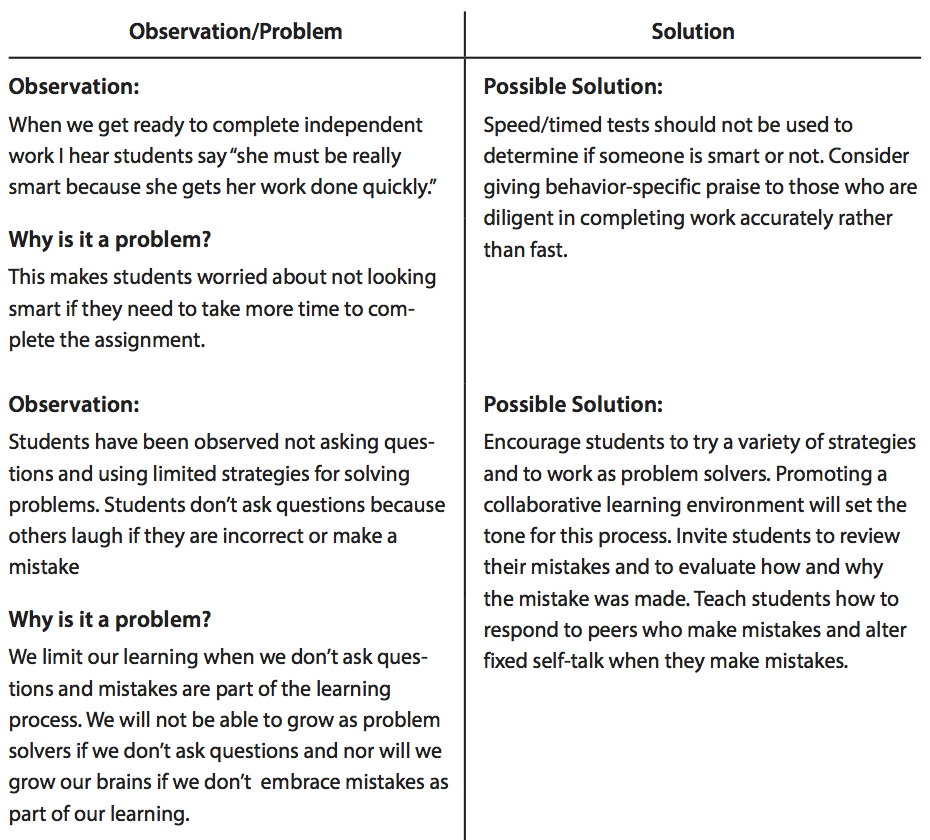
Set Up Effective Classroom Norms with A Growth Mindset Activity (Free Downloads)
- Book Sample /
- Education
To help ease the transition to back-to-school, we’ve been publishing a series of growth mindset classroom activities from the brand-new book The Growth Mindset Classroom-Ready Resource Book! Here’s part three, on growth mindset classroom norms!
SETTING UP GROWTH MINDSET CLASSROOM NORMS
Adjusting to a new classroom and new students can be hard enough on its own, without the added obstacle of a global pandemic. This growth mindset activity can be especially useful for educators who are struggling with the transition to online learning. It can be difficult to develop healthy, growth mindset classroom norms without being in a physical classroom and meeting face-to-face everyday. With this 20-30 minute activity, you’ll be able to get back that collective classroom culture that you and your students may feel is missing!
Teacher Talk
Teachers often set classroom norms on the first day of school, but this can be counterintuitive. Learning what norms are necessary for your particular group of students takes time. Waiting to establish norms will help you determine areas your class will need to spend time developing. This wait time will also help you to be more intentional on teaching and monitoring practices that help students develop the growth-mindset language.
In this lesson, you’ll be asked to do some observation work in the weeks leading up to setting classroom norms. This will help you convey to the students the problem areas you have identified and enlist their help in finding solutions through the establishment of classroom norms.
Be aware of the difference between “rules” and “norms.” Rules are meant to be obeyed, usually in service of student safety, and come from the teacher. A rule might be, “Ask before you leave the classroom.” This rule can and should be established on day one. A “norm,” on the other hand, is a collective decision, agreed upon by all members of the group. When students are involved in the process of formulating the classroom norms, they will be more likely to follow and enforce them because they have a personal investment.
Learning Objective
By the end of the lesson, students will be able to work together to create classroom norms that support a growth-oriented learning environment in which they have a sense of safety, support, and belonging. It is necessary to create and cultivate this ethos so students feel more comfortable to take risks, reduce judgement of one another and themselves, and develop their skills, talents, and abilities in a growth- oriented environment.
Resources And Materials
The resources and materials necessary to conduct this lesson include the following:
- Discussion questions
- T-Chart (see example below)
- Sticky notes
Method
DO: Pose questions based on two to four weeks’ worth of observations in your classroom prior to setting classroom norms. List the questions or problems you have observed on one side of a T-Chart. Ask students to respond on their sticky note with potential answers that could be used to establish a norm to combat the problem. (See the example provided for clarity.)
Use student responses to help discuss and organize five to seven class norms that will promote and support a growth environment for all students. Reword the norms using positive and simple language for easy reference. You may even consider summarizing the norms into one or two “power words” that will help them to be easily referenced and enforced.
Possible Classroom Norms To Establish
Use behavior specific praise and process feedback with growth language.
“I really like how you focused on getting the task done by staying at your center and showing your work as well as trying new strategies.”
Be a problem solver
Examples of Power Word(s):
- Growth-Focused
- Problem Solver or Resourceful
Check For Understanding
Post the norms in the classroom (click here to download an Our Classroom Norms sheet). Add actions to each norm, along with a non-linguistic representation, and teach how to properly respond when the norm is not practiced. Remind students of the classroom norms by making it part of the daily routine; this will help to reinforce your desire to create a learning environment conducive to encouraging all learners to develop and apply a growth mindset. Don’t forget to respond to missteps by using growth-oriented language.
Supplemental/Extension Ideas
DO: Have students describe or journal about their learning each day based on the Power Words that summarize the norms. (Example: I was a problem solver when I used my resources (notes, books, peers, visuals) to help me work through a task.)






